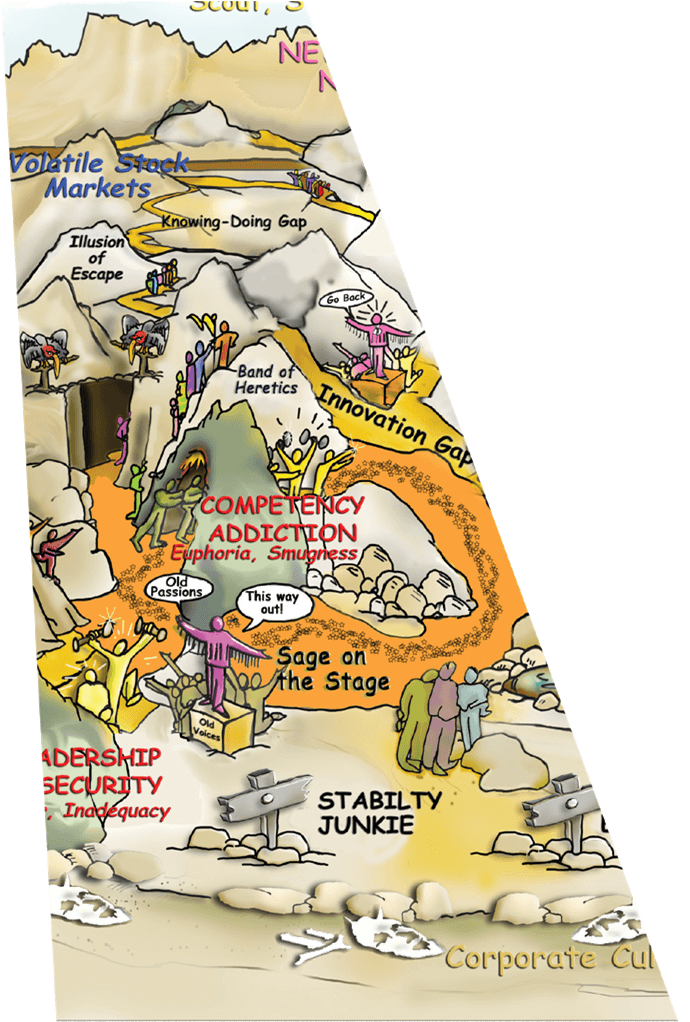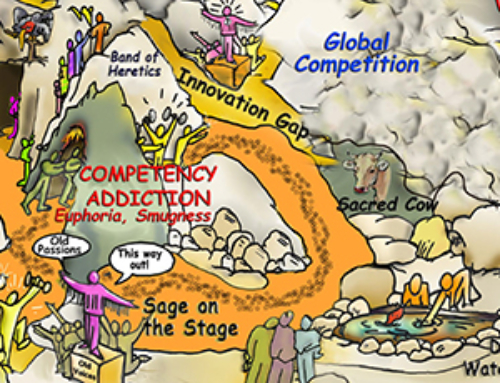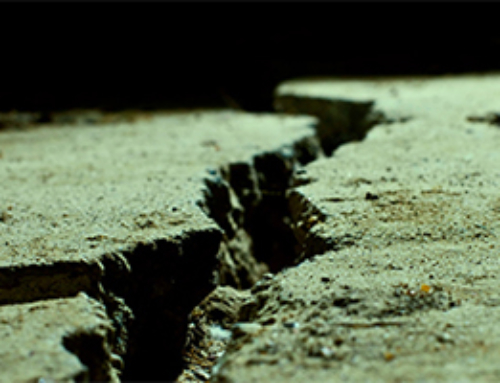Competency Addiction – Don’t
Get Lost In Familiar Territory
“Competency addiction” is the default use of old mindsets and behaviors that just won’t work as you navigate through the next decade to 2025. This pain presents itself when a company suddenly experiences unexpected pressures, either from without—such as a new technology, changed customer preferences, or a new competitor that threatens vital business operations—or from within, such as a young, innovative VP pursuing a radical innovation that could replace the existing core business or business process, threatening the organization’s powerful business leadership.
In instances like these, an organization plagued with competency addiction will respond to the feeling of being threatened by focusing more intently on the old ways and moving to stamp out new ideas.
Don’t Get Lost in Familiar Territory!

Organizational Pain:
Competency Addiction
Arrogance and Smugness
Competency addiction is the mindless, automatic repetition of legacy mindsets and behaviors even when they no longer produce the desired business results and, indeed, harm the long-term health of the organization.
Competency addiction is an intrinsic survival characteristic of the human species, but when it occurs in organizations and is driven by powerful leaders it becomes dangerous. This is particularly problematic when the behavior is driven by self-interest simply because company leaders have much to lose if they get replaced.
Arrogance and smugness, as well as just the dragging of feet, often accompany this scenario, especially as leaders feel increasingly anxious that those legacy behaviors might not work and fear the consequences. They prefer staying lost in the familiar territory of the old ways, rather than risk everything on the alternative.
The New Capability:
Systemic Innovation
To arrive successfully in 2025 demands that companies extinguish their competency addictions and build a climate of systemic innovation. Whereas current structures and cultures tend to hold competency addiction in place, most innovation has been siloed in special, isolated groups such as skunkworks or advanced technology groups.
Innovation requires that both the conditions and urge to develop new ideas be actively supported from the top of the organization to the bottom, as well as inside and out. Leadership and innovation must become everyone’s job. Top leadership must set the conditions for innovation and actively support its growth until it is embedded widely enough to re-seed itself.
Understanding Competency Addiction and its Effects
Mindless behaviors are part of our adaptive success as a species. We survive day to day by repeating behaviors over and over again in all dimensions of our lives. This process has been well documented by a number of researchers.
Our brain is set up to repeat behaviors, particularly if they are successful, but also when the brain doesn’t receive specific feedback that they weren’t successful. Unfortunately, these mindless behaviors tend to continue, even when they result in poor performance.
Current brain research and neuroscience confirm that we humans are as capable of changing our thoughts and behaviors as we are of repeating them throughout our lifetime, although not without conscious effort. We tend to let memory substitute for thinking until we get pushed – either by ourselves or others – to change gears and engage in active thinking and problem-solving.
Many companies persist in using obsolete methods and ideas because of the powerful people who defend them, in contrast to the relative tenuousness of innovators. Companies face double jeopardy because leadership hierarchies and corporate cultures tend to support the status quo as a default position, colluding with our human proclivity to competency addiction, creating a formidable barrier to innovation.
Competency addiction is at epidemic proportions in the early stages of the trek to 2025. In this next 10 years the relentless demand for innovation is far more important to survival and success than the masterful execution of the day-to-day routines honed in the past. Leaders and organizations face an extraordinary challenge when they decide to break down their addiction to their competencies and try to replace it with a culture that supports innovation from top to bottom.
Lessons Learned By Pioneers Who have Exited the Badlands
So how does competency addiction differ from run-of-the-mill mindless behavior in organizations? Competency addiction, for one thing, mimics other human addictions: it builds up unconsciously, is devilishly hard to beat, and if we stop being vigilant, we can relapse at any time.
Furthermore, just dancing around major competency addictions will not work. Given the surge in new technologies and global competitors radical innovation is the name of the game.
Competency addiction looms as a huge barrier to the organizational readiness needed to achieve success in the journey to 2025. At the beginning of the journey, it is easy for companies to stay lost in the familiar territory of old successes. Left unmanaged, this can become fatal. Luckily, there are good strategies to resolve the addiction and create organizational readiness.
Want to learn more? Read ‘Six Steps to Resolving Competency Addiction’
Download the complete Competency Addiction Article as a PDF.





